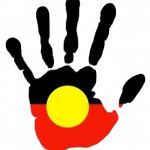There will come a point when your dogs’ haircut will be about 10% determined by you and about 90% determined by them. No matter how hard we try, or how sweet your dog is, the final product of a senior dog haircut may look different to the way it did as a young puppy or a middle-aged adult.
Here’s a breakdown….
Our resident grooming expert, Marguerite Fargo, has a dog named Levi (a Golden Retriever) who is a few months shy of his 12th birthday. His general ‘comfort levels’ vary from day-to-day. He used to get super fluffy cuts with long beautiful ears and a big ‘floofy’ tail. Now he’s clipped pretty short all over.
Getting older affects our furries, just as it affects people. Their joints become stiff or sore, their skin becomes tissue paper-thin, they start losing their sense of awareness, their muscles tremble, their balance is shaky and they get various skin blemishes and tumours. But how does this change their haircut?
A poodle with arthritis in their toes, for example, might not be able to spread them apart to get those pretty shaved toes anymore – so we adapt and start doing a fluffier teddy bear foot.
A schnauzer who’s developed some canine dementia might not tolerate having tangles brushed from his beard without panicking – so we will start trimming it short to keep him calm and comfortable.
A Shih-Tzu who’s always had long hair might end up with a short puppy cut – because the skin has thinned too much to handle the extra brushing required to maintain a lot of hair.
A Bichon Frise who’s always had a pretty fluffy scissor trim may struggle to stand through a ‘full groom’ when his joints start getting stiff and his legs start trembling.
We do what we can to keep your dog comfortable, and that means sometimes, a grooming style may be adapted over time.
Skin blemishes are annoying and moles, skin tags or warts, can bleed if the wind blows the wrong way! We don’t intend to irritate them, but sometimes the bath, drying or brushing over them gently can cause them to ooze a bit.
Occasionally we will have a senior pet who can’t be totally finished in one session. Maybe this guy is having a particularly bad day with his arthritis in winter – or there could be something else medically going on. And sometimes, a grooming session will take longer, because your furry friend needs a rest break.
No matter how hard we try to make it easy on your senior sweetie, grooming can be physically demanding for older dogs (who usually nap 23 1/2 hours a day!).
A groomer may need to stretch the legs of your pooch out to shave them properly, manipulate toes to trim nails or turn your dog’s head from side to side to trim it neatly. The blowdryer your dog has been accustomed to over the years may suddenly become a bit scary (especially where canine dementia is indicated), so we will plug the ears gently with cotton wool (to reduce the noise), and go slow.
If your senior pet seems sore or stiff after a routine grooming procedure he may need a prescription for arthritis medication to be given on grooming days – or perhaps, longer-term.
Our grooming decisions will always be made with your pup’s comfort in mind.
So hug your pooch, take a minute to think about what is best for him to be comfy – and cherish those sweet, little grey whiskers!




